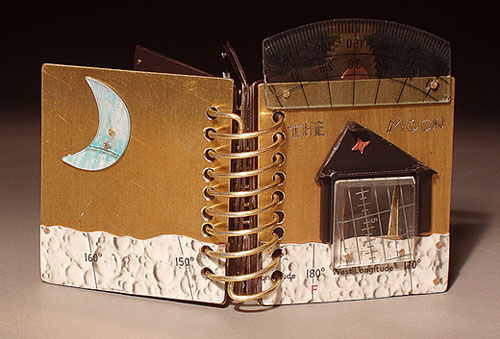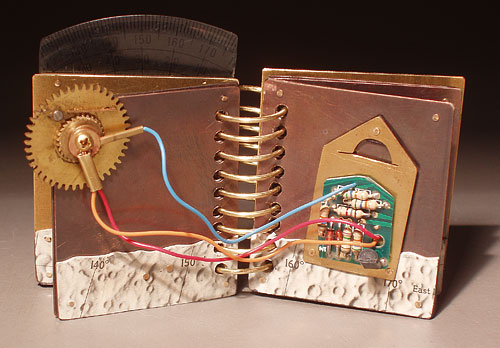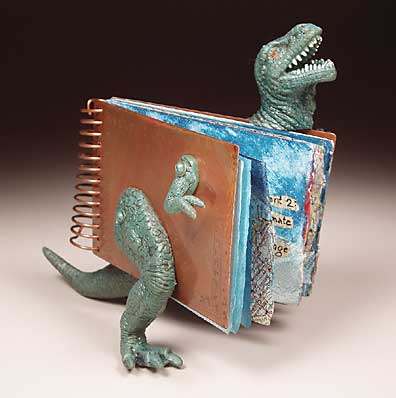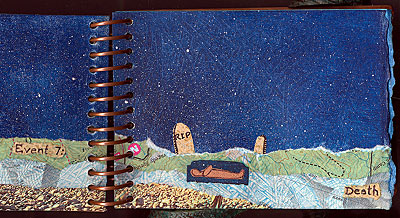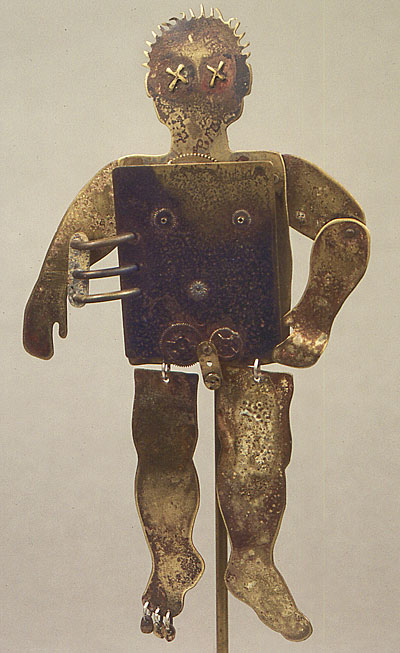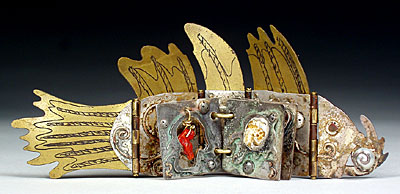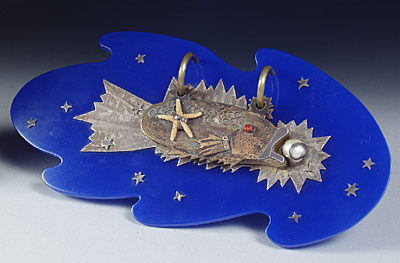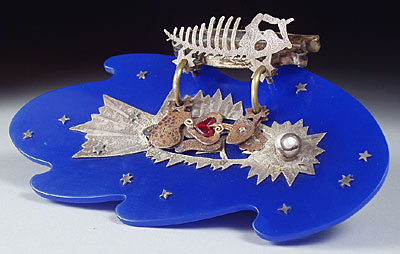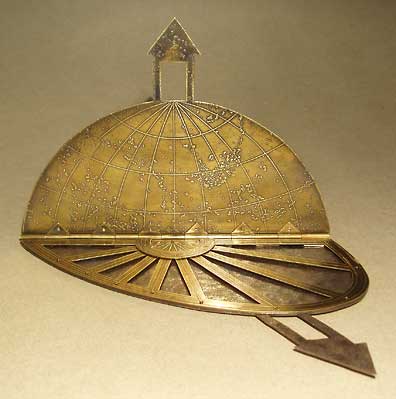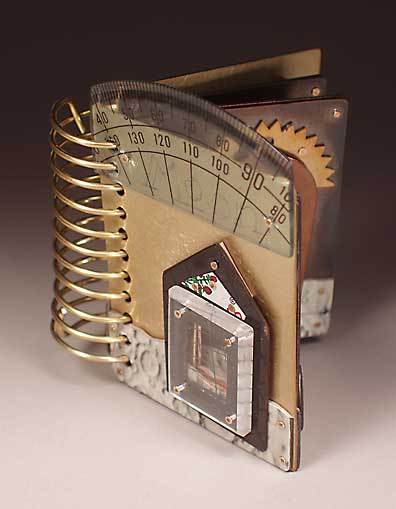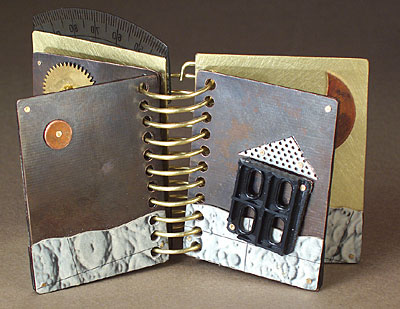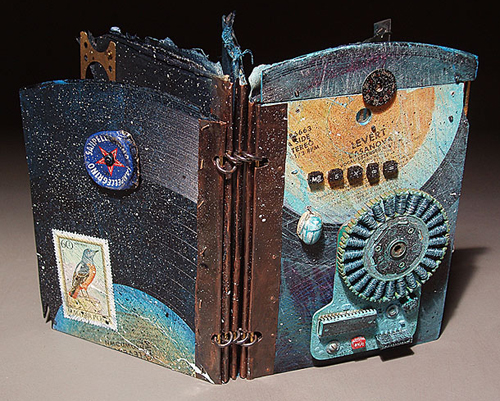
Levert/Casanova, 6.5 x 5 x 2 inches (closed), copper, brass, record found on the street, mechanical parts, broken mirror, acrylic paint, Prismacolor pencils, book covers, fabricated, wire edge binding. It may look like I'm being incredibly productive, but actually I'm finishing things that were abandoned in mid-stride. I'm also trying to think of going to the studio as work, so I don't make other appointments in that block of time. There is a web page with more views here. And for larger photos, check out my flickr artist's books set.
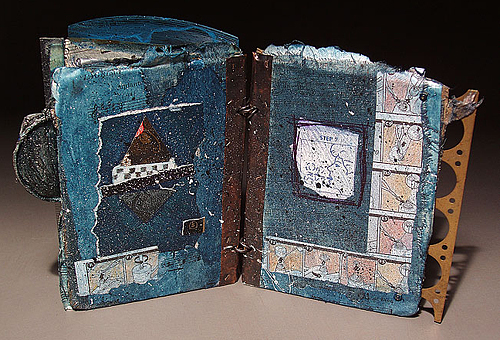
The cover is an old record I found on the street. It is badly scuffed and very appealing. The pages are old book covers. I started by attaching the objects to the cover, alternating between painting and attaching stuff with nuts and bolts and epoxy. I was mostly thinking about sound, music, and the feelings music can convey. The rest of the choices were made intuitively. I believe the mechanical thing on the cover came from the inside of an old walkman. I had drilled holes in the pages so I could bind the book with a spiral. When it was close to finished, I tried it with the spiral binding. The spiral had to be really big in diameter to accommodate the thickness of all the pages, and I hated it. So I set the project aside. Then I discovered Daniel Kelm's wire edged bindings. His are beautifully done and technically masterful.
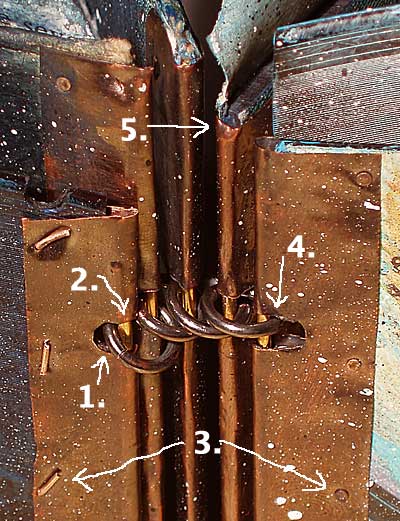
It occurred to me that I could use a low-tech version of the wire edge binding for this book. I cut two notches in the edge of each page. (1) In the detail above they are hidden under the notched copper. I cut tooling copper into 1 inch strips, folded them in half the long way and oxidized them in liver of sulfur. The tooling copper has notches to match the ones in the record/cover. I cut brass wires (2) just shorter than the length of the strips of copper. To attach the strips of copper to the pages I laid the wire in the fold of the copper and riveted the strips onto the edge of the page matching up the notches. I couldn't get the rivets to form nice little round heads because the tooling copper is so thin and soft and the materials underneath are also soft, so I just hammered the posts over. (3) I'm using ear posts for these rivets, but you could also use wire, bending it on one end before inserting it into the hole, then cutting the other end off and tapping it down. Just make sure the wire is a snug fit in the hole. In the detail above you see the ear post head on the right. The jump rings (4) that hold the book together are copper wire. Several of the wires wanted to slide out of the tooling copper strip, so I hammered the ends of the strips a bit. (5)

